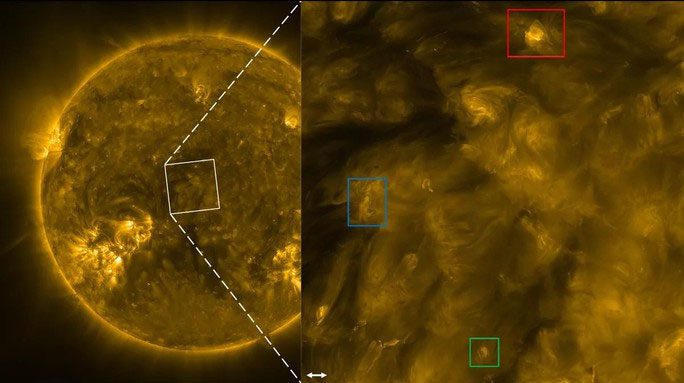A spacecraft operating around the Sun has uncovered the mystery behind why our mother star appears as a bizarre monster amongst the stars, with an “infernal” atmosphere that defies expectations.
Decades ago, scientists recognized that the Sun seemed vastly different from other stars that had been observed. It could even be described as a “monster” that broke all models of stellar celestial bodies, due to its extremely unreasonable “infernal” atmosphere.

High-frequency waves “wandering” across the corona have been recorded by the Solar Orbiter (SO) of ESA – (Photo: ESA).
The temperature of the upper atmosphere of the Sun, specifically the corona, can soar to over 1.1 million degrees Celsius, while the region just 1,600 km closer to the core—the photosphere—is only 5,500 degrees Celsius, according to Live Science.
Typically, the atmosphere of a star is heated by nuclear fusion reactions occurring in its core. However, if that were the case, the upper atmosphere should not be able to reach temperatures 200 times higher than those of the lower layer. It should be much cooler than the photosphere.
This indicates that there is something unknown that has been heating the Sun, our peculiar mother star. This has remained a puzzle for 80 years.
Recently, the Solar Orbiter (SO) from the European Space Agency (ESA) unexpectedly detected something strange: high-frequency waves propagating throughout the corona.
From a distance of 42 million km from the Sun, the Solar Orbiter utilized the Extreme Ultraviolet Imager (EUI) operated by the Royal Observatory of Belgium (ROB) to capture images of the corona with unprecedented resolution.
And they observed these small waves transmitting through the plasma in this scorching atmospheric layer.
They continued to analyze and synthesize various previous studies and confirmed that these fast-oscillating high-frequency waves could significantly heat the corona.
However, what has been captured is not enough. Researcher David Berghmans from ROB stated that they are still in search of more comprehensive answers, potentially involving even higher frequency waves, to understand how the corona is heated and creates an “upside-down” atmosphere for the Sun.


















































